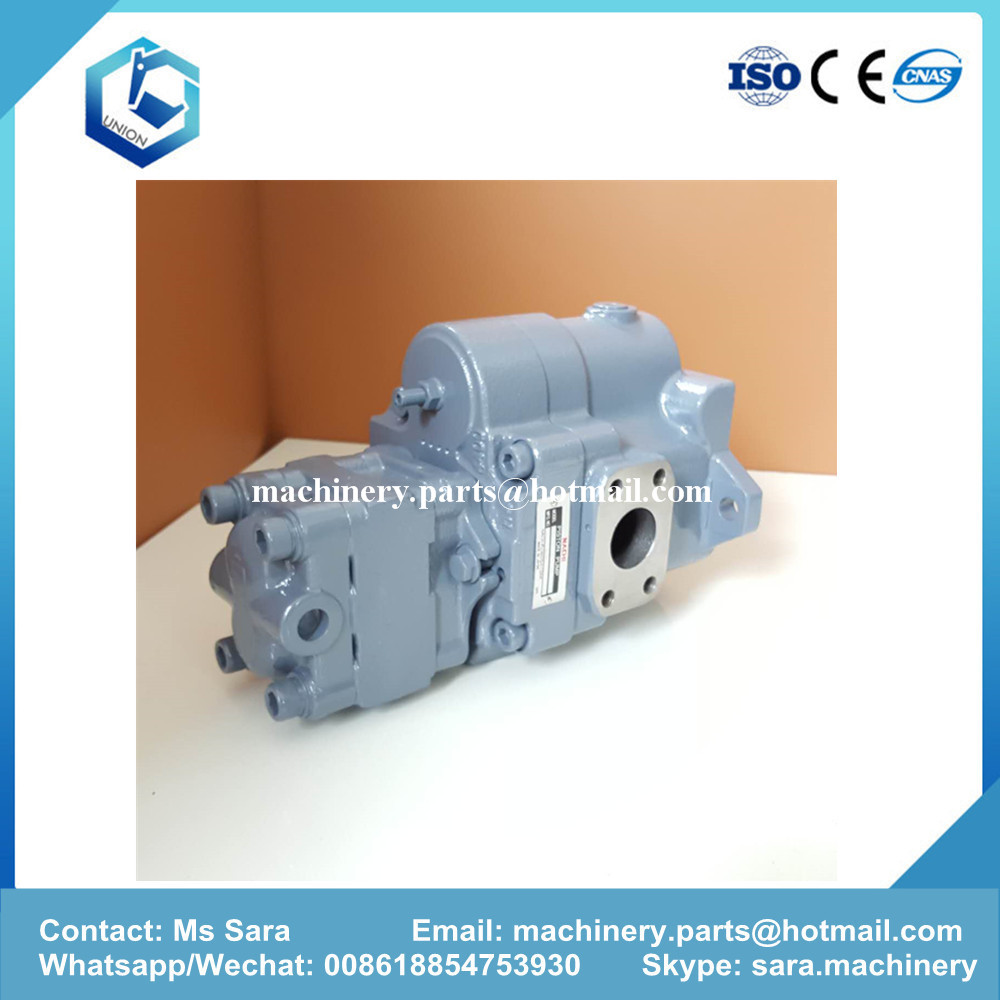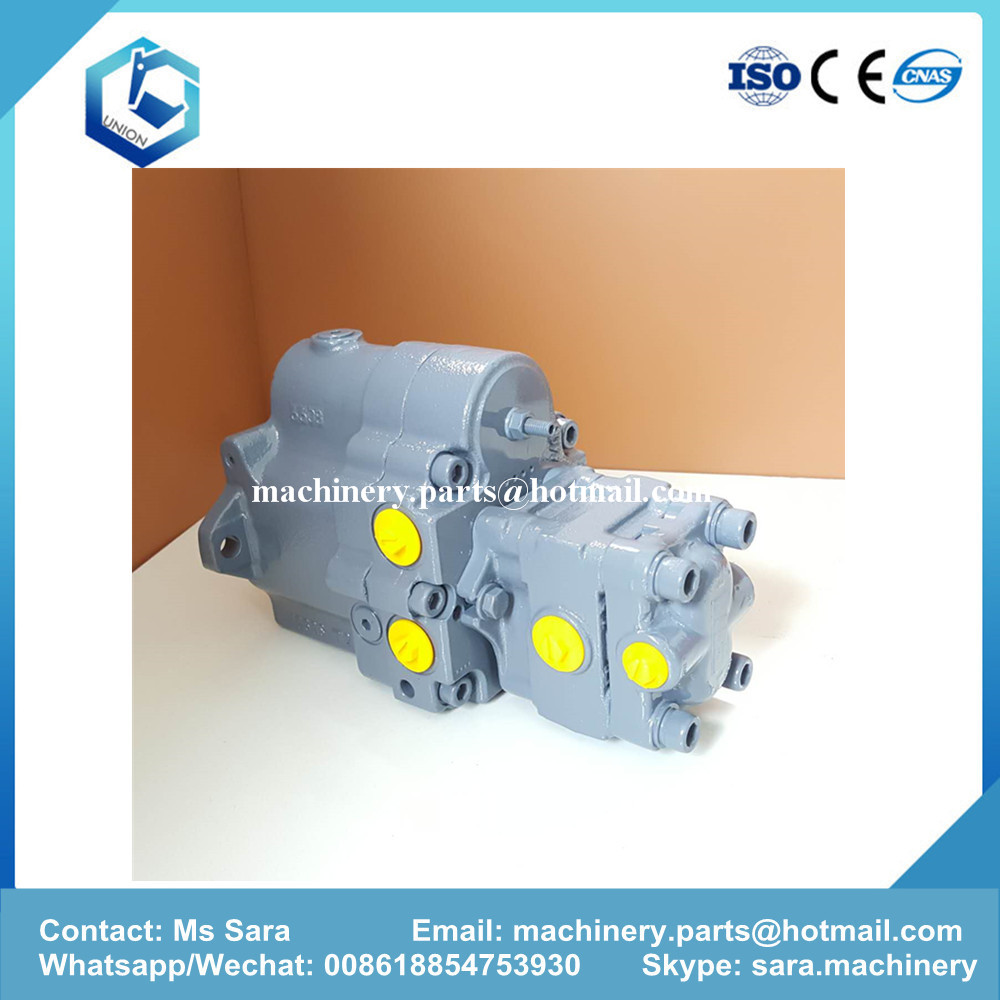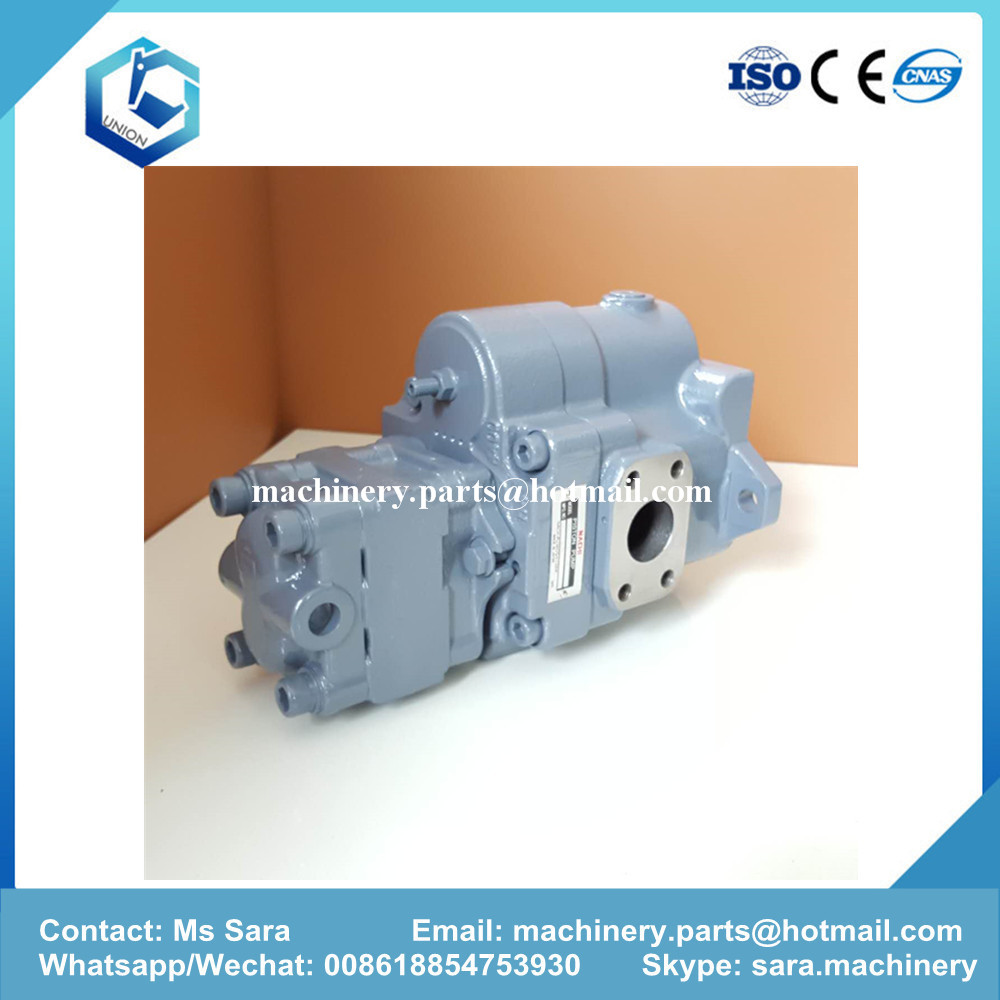Research on Residual Mineral Recovery Technology in the North Area of ​​Shuangyashan Iron Mine
I. Overview of the mine
Shuangyashan metamorphic magnetite iron ore bed deposition, North layered ore output, the average thickness of 6 ~ 10m, angle 60 ° ~ 90 °. The ore is mainly composed of strip magnetite and contains trace amounts of hematite with an average grade of 30.79%. The ore body is magnetite quartzite , the surrounding rock is mainly quartz schist and gneiss , and the surrounding rock is mainly quartz schist and marble . The joints of mineral rock are developed with poor stability (Table 1).
Table 1 Results of classification of rock stability in the northern area 
The design uses the shallow hole to retain the mining method. In the actual production, the surrounding rock is not stable. In the mining process, the design leaves a 0.5 m thick retaining wall column. Even so, in the area with poor stability. Paragraph, still can not control the fall of the surrounding rock. Some of the stope landed in the early stage of the large-scale ore mining, causing the falling rocks to be mixed into the ore too early, causing the depletion rate to be too high, and the stope was forced to stop the ore mining in the middle; Falling, increasing the width of the empty field, causing a large number of cavings in the roof rock, so that the stope is forced to stop mining in the middle. This resulted in a large loss of ore.
The increase in ore loss has accelerated the decline in the mining face, resulting in a serious shortage of reserves. At the beginning of 2008, the mine was transferred from the middle of 220m to the middle section of 170m. The stope could not be connected and the production organization was relatively tight. In order to complete the production task and fully recover the mineral resources, a residual mine recovery test was carried out between the 1st to 12th exploration lines in the middle section of 220m.
Second, the ore residue morphology analysis and recovery method determination
The northern area is mined by the shallow hole retention method of electric shovel mining, and the ore block is arranged along the strike. The length of the ore block is 50m, the width of the column is 6m, the stage height is 50m, and the height of the top and bottom columns is 6m. The ore in the stope flows into the electric ramp by gravity, and the electric raft directly enters the mine car in the tunnel.
In the mine mining process, the most serious crashing state is shown in Figure 1. When the upper part of the mine is taken, or the exposure height is caused by loosening of the ore, or the exposure time is long, the surrounding rock of the roof is loose. Moreover, due to the fact that the film falls and the roof collapses almost continuously, it is difficult to process, resulting in an increase in the span of the empty field. Eventually, the ore falls at the same time, making it impossible for the stope to continue mining and being forced to carry out large-scale ore mining in advance. When the amount of waste rock is more than half, the release is stopped. At this time, the ore recovery rate is less than 60%, and a considerable part of the ore falls and falls off the ore and remains on the lower wall of the ore body.

Figure 1 The fall of the stope
1-Electric sluice roadway; 2-passing roadway; 3-Patio; 4-wayway; 5-Funnel neck; 6-falling ore pile; 7-falling ore
In order to estimate the range of the ore body shown in Figure 1, we observed the boundary position of the landing zone at the 260m horizontal vein roadway, and found that the side wall inclination angle of the falling arch is about 85°. The caving area is estimated according to the 85° caving angle, and the boundary of the ore rock is estimated by the equation of the displacement of the stochastic boundary under the stochastic boundary theory. The residual body shape of the surrounding rock of the upper disc is shown in Fig. 2. Show.

Figure 2 Different types of residual ore and recycling design in the stope
1-stage transport lane; 2-lower disc residual; 3-falling ore heap; 4-collapse line; 5-recycling design turret
Due to the poor stability of the surrounding rock near the mine, it is difficult to form the bottom structure and the vein roadway. Therefore, a technical scheme for recycling the residual oil in the lower plate is designed. The project-recovery method has a small exposed area and reduces the disturbance range of the project, which is conducive to stability and good safety conditions. The approach of the vertical ore body is arranged, the spacing of the approach is 8m, and the section size is: width × height ≡ 2.6m × 2.8m. The arrangement of the approach and its projection relationship with the position of the tunnel are shown in Figure 3.

Figure 3 220 middle section residual mine recovery engineering design
1-Electrical channel projection position (dashed line); 2-Recovery route (solid line); 3-stage transport lane; 4-mineral boundary
Third, the implementation and effect of the residual mine recovery program
The five stopes on the 1st to 12th lines in the middle section of the North District 220 are all collapsed in the mining process of the mining area. The inter-columns in the stope have been recovered from the tunnels.
Due to the development of the joints of the ore body and the recovery of the residual ore to the inducing caving test in the lower middle section, in order to ensure the smooth implementation of the scheme, the research team is aiming at the mutual position of the remnant recovery approach and the 170 mid-section test stop. The following measures were taken to solve the problem of the support of the recovery road and the charge of the blasthole: 1. The new recovery road is combined with the corresponding lower middle section (the middle section of 170) to induce the caving of the stope to determine the landing boundary. Coordinate the construction progress of the upper and lower stages. The current working position in the upper stage of control is always outside the current collapse and falling range of the next stage to ensure the safety of the approach workers; 2 the way of roadway support depends on the specific situation and the stability is not high. The bolts are used for support. The crushed ones should be sprayed with the working surface to make the cement slurry full of cracks. At the same time, the bolts are used to strengthen the overall strength and ensure stability. After the rock drilling work in the 3 way is completed in one time, the blasting and recovery should be carried out in time to avoid deformation and damage of the blasthole. For the stope where there is an empty field inside, the approach should not be too close to the end, avoiding the fall of the stone in the stope. The charge can be determined according to the type and safety of the explosive. It can also be pre-charged after the ore body in the stope is completely collapsed, so as to improve the safety of the workers. 4 Because the ore body has been slumped for a period of time, the porosity between the bulk bodies is reduced by the pressure, and it is compacted. Therefore, for the direct-mining method, the ore-mining operation should be carried out first, so that the loose body occurs. The looseness provides sufficient compensation space for the blasting of the blasthole, thereby saving cutting engineering and reducing the amount of rock blasting work.
The program began to be implemented in March 2008, mainly focusing on the mid-220 S4 ~ S12 through the pulse. Since the mining of the south wing of the 220nd section has been completed and the roadway is closed, the basic working conditions such as wind, water, electricity and transportation in the roadway are first restored. The recovery wind and water pipes are respectively 3 inches and 1 inch and a half plastic pipes with a total length of 500m; the power and lighting lines are restored to about 480m; at the same time, the transportation track is cleaned and reinforced. The total cost of restoring materials is about 25,000 yuan. After nearly one month of recovery work in the main road, the mine began the mining work of the residual mine recovery route in April 2008. The main construction of the South Wing No. 10 Mine 3 out of the mining approach, the average length of each approach is 6m. As of the end of April, the ore near the No. 11 piercing vein had a total of about 3000 tons of ore, which achieved good initial results.
With the deepening of the construction of the mining project, the mine adopts the method of mining side-by-side mining to recover the residual ore. By the end of the project, there were a total of 10 approved access roads, including 1 mine, 4 mines, 3 mines, and 11 mines. Among other mines, No. 5 and No. 6 mines have been re-routed and no roads have been arranged; No. 7 and No. 8 mines still have some minerals, and no recovery operations have been carried out. The turret row in the mining road is arranged according to the thickness of the ore body, and the blasthole adopts a vertical fan-shaped arrangement to perform blasting recovery by row. The rock drilling equipment is the current QJZ-100B down-the-hole drilling rig . The diameter of the blasthole is 90mm, the maximum depth is 30m, the row spacing is 1.5m, and one row is blasted. The mining is carried out by manual loading, the motor vehicle transportation mode, the specification of the mine car is 0.75m 3 , and the weight of each vehicle is about 1. 45t.
As of the end of July 2008, the recovery of residual ore was completed, and most of the recovery routes were filled with yellow rock and earth. According to the statistics of recovered ore and cost, the actual total ore deposit during the recovery of the residual ore was 18,172.85t, of which the ore was 16722.85t and the rock was 1450t. The accumulated investment of the project was 325,600 yuan. According to the current price calculation, the recovered ore was converted into fine powder and the net profit was 2.926 million yuan.
The on-site implementation results show that the overall effect of residual ore recovery is better, and the recovery of mineral resources under the conditions of ensuring safe operation partially relieves the tension of mine production and has significant economic benefits. The proposed inlet-type residual ore recovery scheme that utilizes the characteristics of rock mass caving can provide reference for similar mines in China.
Fourth, the conclusion
(1) The Shuangyashan Iron Mine North Area is mainly used for shallow hole retention and mining method. Due to the poor stability of the ore, a large amount of residual ore is accumulated in the middle part of 220. On-site investigation and analysis showed that the residual ore in the stope includes three types: falling minerals, unreleased ore in the stope, and unrecovered and unrecovered inter-column.
(2) Combining the characteristics that the ore is easy to fall, the approach of the three types of residual ore in the middle section of 220 is proposed. Tests have shown that the inlet recycling scheme increases the stability of the recovery project and the safety of the operation. At the same time, the use of the ore body is easy to fall, the top ore body can naturally fall, reducing the amount of layout.
(3) Engineering practice shows that the implementation of the residual mine recovery program is good, simple, efficient and safe. It effectively reduces the ore loss of the original mines, partially alleviates the tightness of the mine output, and has significant economic benefits. The proposed inlet-type residual ore recovery scheme that utilizes the characteristics of rock mass caving can provide reference for similar mines in China.
Hydraulic Pump for Nachi
Jining Union Machinery And Parts Co.,ltd mainly sells the Hydraulic Pump For Nachi and pump parts. Drive Shaft,Ball of Swash Plate, Swash Plate, Pistion Shoe,Set Plate, Ball Guide, Pin of Cylinder Block, Cylinder Block, Valve Pate are aboundant in stock.
PVD Series Piston Pump for Nachi
One pump discharges two equal amounts of flow to ensure shovel straightness.
Constant horsepower control with full use of engine horsepower, resulting in increased speed and power for mother machine.
Compact size enables installation in a small engine room
PVD-1B-32 PVD-2B-40 PVD-2B-36
PVK Series Piston Pump
- Constant horsepower control with full use of engine horsepower, resulting in increased speed and power for mother machine.
- Load sensing control can be achieved with our DPK load sensing valve, resulting in energy savings for mother machine.
- Compact size enables installation in a small engine room.
PZ Series Piston Pump
- Half-cylindrical swash plate for low noise and low pulsation
- Spherical valve plate for high efficiency (Employed into 3B, 4B and 6B.)
- Various capacities ranging from 35 to 220cm3/rev (7 sizes in total)
- Multiple string option with our IPH series inscribed gear pump.
- The electro-hydraulic proportional control valve uses the proven force feed-back system for improved hysteresis, repeatability, and response.
PVS Series Piston Pump
- Half-cylindrical swash plate for low noise and low pulsation
- Rich set of options to enable highly efficient, energy-saving equipment.
-

-


Hydraulic Pump For Nachi
Hydraulic Pump For Nachi,Nachi Hydraulic Pump,Hydraulic Pump For Nachi Excavator,Nachi Hydraulic Pump For Excavator
JINING UNION MACHINERY AND PARTS CO., LTD. , https://www.vmpmachineryparts.com
